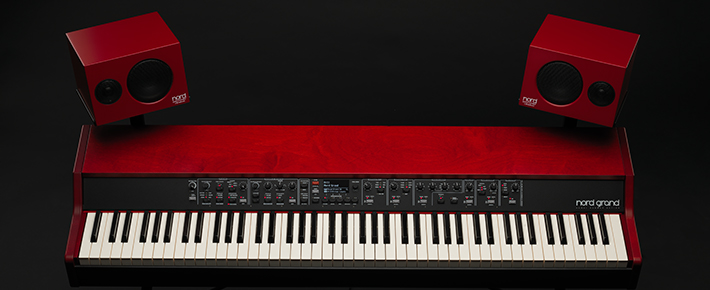Hadn’t thought about contributing to this thread until just now after Prisca’s recent post, but I found the thread interesting and valuable.
I started off with a Kawai mp10 (predecessor to the mp11) about 10 years ago after moving from an acoustic Baldwin grand to digital, then earlier this year I picked up a Kawai mp7se because I go back and forth between two different homes. I love the mp7se. The action is lighter than the mp10; consequently slight inconsistencies in tempo or key engagement are not so noticeable on the mp7se, whereas the mp10 is less forgiving. (I would be interested in anyone’s experience who has directly compared the mp10 touch/action to that of the mp11se).
I also have a StudioLogic SL-73 as a travel keyboard–it’s very solid and durable, unlike some other inexpensive keyboards, and with a pelican case for airline travel, weighs just under 50 pounds. Only downside so far is that I have to explain to the gate agent that it’s a keyboard and not a firearm.
The SL-73 is just a controller, though, and I’ve been using either the Ravenscroft-275 or Pianoteq as a VST. Occasionally I’ll use the VST with one of the Kawai keyboards to try something different from the Kawai built-in sounds.
Two brief digressions and a question:
(1) For speakers rather than headphones, high quality studio monitors (I have Focal alpha 50s) are much better than a “keyboard amp”; I used to have a KC-350, and the monitors are infinitely nicer.
(2) But room acoustics have an enormous effect. Playing the exact same VST with the exact same monitors in different locations sounds completely different, and I still haven’t found the right combination of velocity settings to get the sounds to match. (Through headphones, the sounds are, of course, identical).
Question: for those of you using the Ravenscroft-275 or Pianoteq, it would be helpful to know what sorts of changes you’ve made to velocity settings, and the process you used. (Pianoteq has dozens of instruments, all of which use a common interface; Ravenscroft has a different interface).
Finally, for anyone that has Pianoteq and want to try something a little different, check out the fxp settings used by 7notemode which are free from his website:
(I tend to be a keyboard purist but I think his layered approach of combining, e.g., a Steinway D with an electric piano works very well for the Bonnie Raitt tune).
 I tend to get distracted with all the gadgets in musicland instead of practicing.
I tend to get distracted with all the gadgets in musicland instead of practicing. 

 so I bought myself a Roland FP-50 a few years back and can practice even at dawn time
so I bought myself a Roland FP-50 a few years back and can practice even at dawn time  There are so many good digital pianos out there and have also been checking on the new features they have…
There are so many good digital pianos out there and have also been checking on the new features they have… 






 , combining the touch of Kawai (for me the best for digital piano) and the tech point of Nord … Never touch it , but some pro player tell me its really a great one ; best compromise today for a portable piano with a great sound and touch . The only cons are the price and the limited memory and no organ sound or synth
, combining the touch of Kawai (for me the best for digital piano) and the tech point of Nord … Never touch it , but some pro player tell me its really a great one ; best compromise today for a portable piano with a great sound and touch . The only cons are the price and the limited memory and no organ sound or synth
